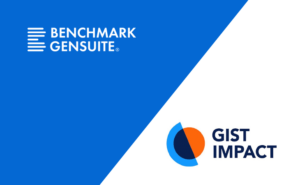Business Sustainability Risk Management
Organizations worldwide are under pressure to comply with global and regional environmental regulations. From opting for renewable energy resources to using sustainable materials in production, businesses actively seek ways to align their profit goals with environmental policies.
To ensure business sustainability, your organization needs to consider the environmental, economic, and social factors that affect you, looking beyond short-term gains to aim for long-term resilience. I would like to share my approach to business sustainability risk management.
From my Define, Measure, Analyze, Improve, and Control (DMAIC) training, I recommend aligning risk assessment with business systems and processes as a basis of sustainability. Here are the five steps involved in successfully managing sustainability risks in business.
5 Steps to Effectively Manage Risks for Business Sustainability
Risk management involves identifying, evaluating, and controlling organizational capital and earnings threats. Some degree of risk is always present in any system and is essential for establishing sustainability risk management for businesses, organizations, and governments.
By actively identifying and managing risks that affect your supply chains, production, operations, and other functions, you can build effective systems that ensure business sustainability. Here’s how you can manage risks and meet your business sustainability goals.
1. Define (Identify Sources of Potential Loss/Failure)
To ensure long-term sustainability, identifying sources of potential loss to your business and opportunities for transformation and innovation is crucial. Risks can manifest themselves in many different ways, from those involving the marketplace to those that affect your teams, and that’s why effective sustainability risk management becomes essential. Here are some sub-systems of risks to consider.
Supply Chain Sustainability Risks
Getting to the bottom of your supply chains is crucial for effectively managing risks. Industries with longer supply chains tend to be exposed to more risks that can surface as workforce health and safety incidents, a shortage of natural resources, or labor disruptions, leading to supply shortages.
When you’re identifying supply chain risks, look beyond your direct suppliers to lower-tier suppliers as well. Access to your lower-tier suppliers means having access to your lower-tier suppliers, you face excellent business opportunities, including a bird’s eye view of technological progress across your value chain, so you are prepared to innovate proactively.
Environment
Your business may face two kinds of environmental risks: physical and political.
Physical (Environmental Management Controls
In the next ten years, environmental risks will dominate concern for governments and organizations worldwide. Climate action failure, extreme weather, and biodiversity loss are global threats, with human ecological damage and natural resource crisis following closely behind. From the location of your business to supply chains, physical environmental risks can pose severe consequences if not managed well.
Political (Governmental Regulation)
In 2022, the private sector will be tasked with reducing its environmental impact, initiating climate action, and accelerating decarbonization efforts, with governments worldwide imposing stricter sustainability regulations on businesses. In the United States, for instance, the Securities and Exchange Commission (SEC) announced in March 2022 the release of the proposal for mandatory corporate climate disclosures. Similarly, the European Union (EU) proposes aggressive climate action and may implement policies that make sustainable products the norm and promote energy efficiency.
Businesses will have to identify risks that accompany political mandates. Non-compliance with these regulations can pose significant business risks.
Health and Safety
To prioritize an active and engaged workforce, you’ll have to identify and manage occupational health and safety risks that may threaten the sustainability of your business, including work environment temperature, air quality, and other workplace hazards.
People
People risks, or human risks as they are also called, refer to the consequences of your team members’ actions when they deviate from your organization’s rules and regulations, potentially damaging your business’ reputation. Instances of this include fraud and other illegal activities.
Quality
You face quality risks when your products and services don’t meet your business’ quality goals and customer expectations. Your products may be exposed to different quality risks, from manufacturing equipment to transportation at various life-cycle stages.
Technology (Equipment, Process, Materials)
Risks associated with technology include hardware or software failure, data risks, hardware-based attacks, and non-compliance with data governance, among others. Technological risks abound and affect the equipment, processes, and materials involved in many business systems. Businesses need to foresee these issues as part of managing sustainability risks.
Security
Security risks include physical risks like document theft and property trespassing and cyber security threats involving data.
When faced with a cyber-attack, you can lose information and bear economic costs, risking damage to your reputation and leading to losses in sales and customers. Identifying risks associated with cyber-attacks, including phishing and hacking, mitigating them by backing up data and encrypting information, and training your employees to follow safe online practices is crucial to ensure business sustainability.
Energy
Organizations face many energy risks, including a rise in fuel cost, energy blackouts, regulatory changes affecting energy usage, and customer demands to reduce carbon footprints.
Equipment
The machinery and equipment in your organization’s facilities can pose several levels of risk. For instance, equipment failure can potentially cause disruptions in your supply chain, posing economic risks. Additionally, workplace equipment like cutting tools and those that use heat may be hazardous to the health and safety of your shop-floor employees.
Economic Conditions (Inflation, Interest Rates)
Economic risk refers to the dangers that the macroeconomic conditions of an economy pose to an organization. These kinds of financial risks include inflation, changes in interest rates, exchange rate fluctuations, and economic sanctions.
Liability Protection
Your organization may also face liability if its activities cause harm or injuries to a third party—people, property, or business. Many companies opt for liability protection or insurance to manage these risks.
2. Measure (Evaluate Frequency, Severity, and Probability)
Once you’ve identified your organization’s multiple risks, measuring them is the next step in effective risk management. Many organizations use a risk assessment matrix to measure the probability and severity of various risks and assess whether they are high or low. Often, the chance is calculated on a scale ranging from frequent to unlikely, and the severity scale can move from catastrophic to negligible. A risk that is measured as both regular and catastrophic on the matrix would have a high-risk value, while that which is both negligible and unlikely would pose a low-risk value to an organization.
For instance, measuring climate change risk using the risk assessment matrix can be especially useful in analyzing the impact of climate change on agricultural water management and adaptation options.
3. Analyze
Once a risk has been identified and measured, analyzing that risk is the next step to examine how your project or business outcomes may change if you’re faced with the risk. In the analysis stage, your business can define a risk threshold. For instance, you may categorize a risk score of 0.90 or more significant as high risk and create a risk management plan to mitigate such a risk, should it occur.
You can also identify a risk trigger—an indicator to determine whether a risk is about to occur or has occurred. For instance, if an EU regulation makes sustainable products mandatory, that would be a risk trigger prompting any organization that uses unsustainable materials in their products to switch to appropriate materials quickly. The risk trigger is accompanied by an action plan defining how a business can tackle a risk when it is triggered.
4. Improve (Implement Appropriate Control Plans)
In this stage, you’ll have to define a clear action plan to deal with risk should it be triggered. How can your project improve a current process to minimize or mitigate the risk?
You can implement preventive plans that are activated before the risk is triggered, contingency or recovery plans that are activated after the threat is triggered, or simply accept the risk.
For instance, to manage cybersecurity threats, you can train your employees to push for an investigation each time they receive an email from an external, unknown source. Your IT teams can examine the email and identify its risk potential. Such a control plan would be preventative.
5. Control
Risks are dynamic! When stakes are monitored, you can account for their changing nature and prepare for emerging risks. How effective is your control plan if the nature of risk changes? In this stage, you can assess the effectiveness of your control plan and how you can tweak and improve it.
Many organizations are incorporating Information Technology (IT), from data analytics to the Internet of Things (IoT), to monitor their control plans and continually identify emerging risks. By incorporating IT in risk monitoring, your organization can collect large volumes of data in real-time, enabling preventative actions and identifying risks before they occur.
Environmental monitoring is one such process used by businesses and governments. For instance, many governments regularly participate in air and water monitoring projects to identify pollutants and their impact on the ecosystem, determining how countries can cooperate to minimize risks.
Embrace Digital Tools to Drive Business Sustainability by Seamlessly Managing Risks Across Multiple Business Systems
To ensure business sustainability, your organization needs to identify risks to your business, assess their probability and impact, determine the maximum acceptable risk, and devise control plans to mitigate them and enhance business value. Explore Benchmark Gensuite®’s comprehensive suite of digital solutions that ensure business sustainability by empowering and uniting teams across your enterprise to manage health, safety, environmental and other risks effectively.



